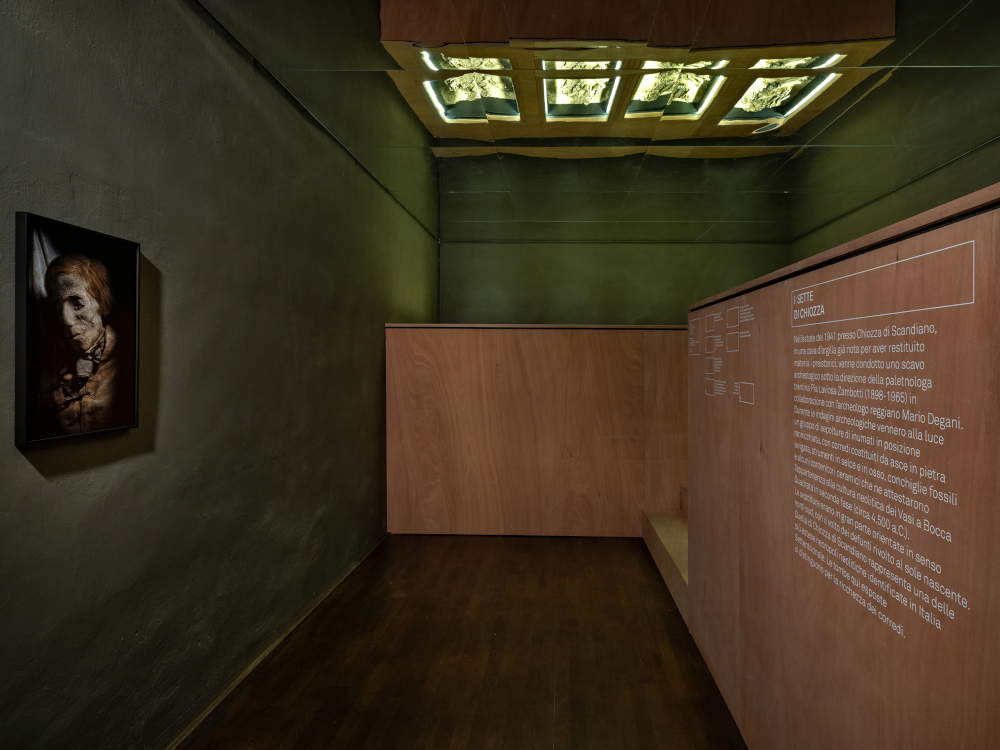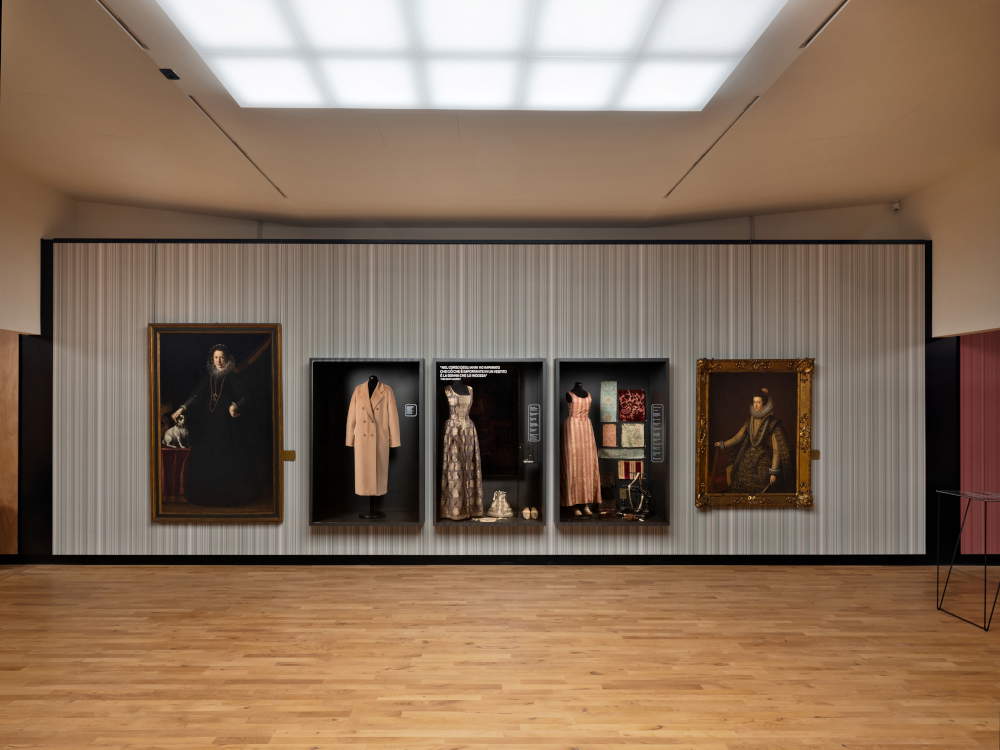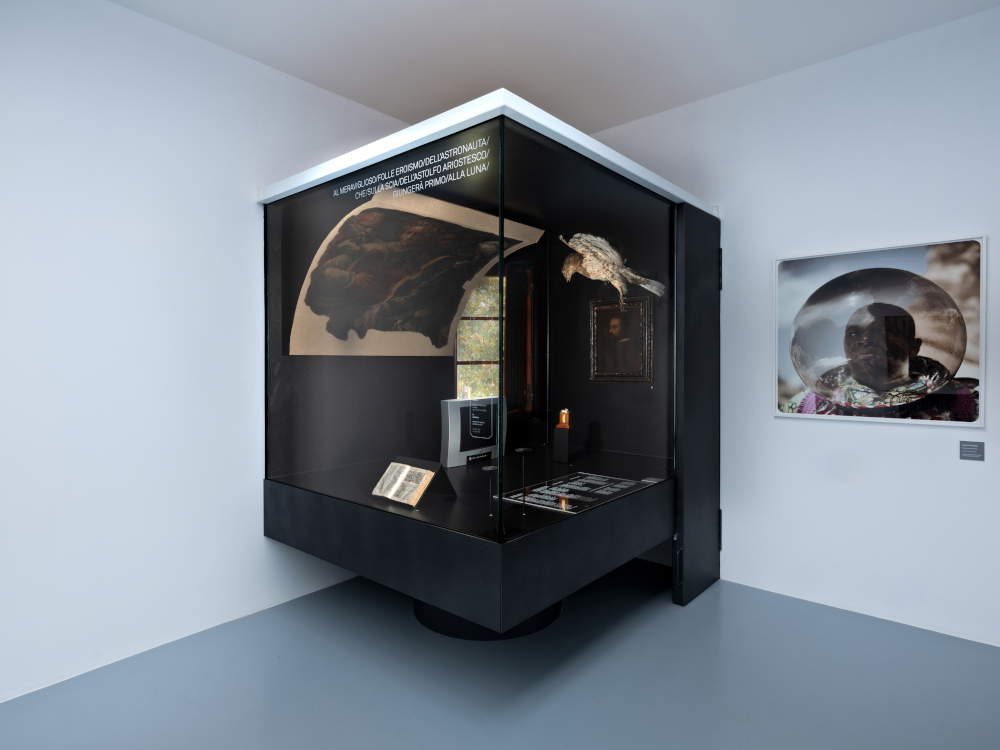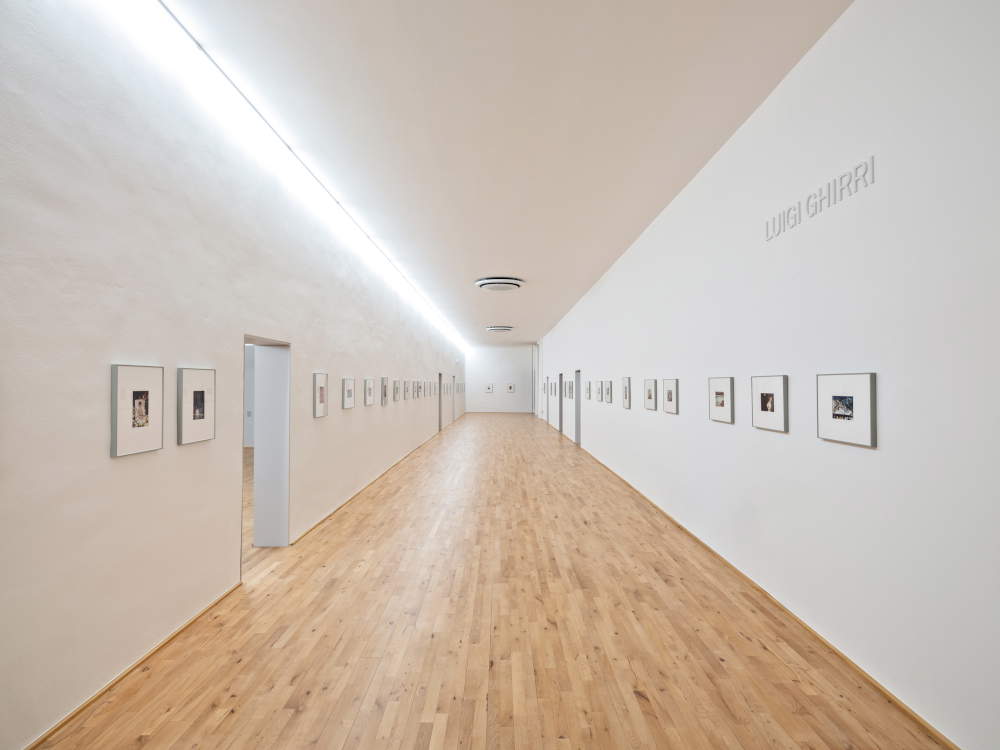The Palazzo dei Musei, home of the Reggio Emilia Civic Museums, has completed with the opening of the second floor an overall rethinking of the collections, thanks to the design idea of Italo Rota and the curators of the collections. A museum within a museum composed of the Lazzaro Spallanzani Collection, the Gaetano Chierici Museum of Palethnology, the Archaeology collections with the Portico of Marbles, the Cloister and the Atrium of Mosaics, the Zoology and Anatomy collections, the Ethnography and Botany collections, and the Geology section.
The Museum has become newer, bigger, more museum-like: in the face of one of the oldest museum testimonies in Italy (the origin of the museum can be dated to 1830, the first nucleus originated in 1799), now Reggio Emilia traces and makes permanent its new role in Contemporaneity. The New Museum is a shared space of the 21st century where history, cultural heritage, images and technology coexist and dialogue. It addresses an active visitor, invited to immerse himself in a great Archive of the commons: the museum materials, some of which have come out of storage, others from city institutions (among them the Panizzi Municipal Library), are organized according to a plurality of narrative levels, of space-time connections. It kicks off a narrative that starts with the Prehistory of the Reggio Emilia territory, which also features exceptional finds such as the Venus of Chiozza and the Copper Age Axe, and reaches back to Marcus Aemilius Lepidus and his Via Emilia; continuing then with great figures such as Correggio and Ludovico Ariosto, with the Este family and the first Tricolor, up to the nineteenth century of Antonio Fontanesi and finally to contemporaneity, the latter represented by an important and vast photographic heritage, born from the works collected or commissioned by the Municipal Administration to the artists who have participated in over fifteen years in the European Photography project. The photographic heritage also includes the production of Luigi Ghirri, preserved by theLuigi Ghirri Heirs Archive. Given the significant role that photography plays in the city’s history, one can speak of Photo Affection: this is why the New Museum devotes considerable space to the photographic world. A permanent section, designed in collaboration with the Luigi Ghirri Heirs Archive, recounts the research of the famous landscape photographer whose 30th anniversary of his death falls this year, and here each year an exhibition will be proposed to make people discover his rich production; an open research on his work in the many possible solicitations that his ’gaze’ continues to make people reflect in the contemporary world. On the other hand, the aim is to enhance the Fotografia Europea collection, which will be periodically rearranged for conservation reasons.
If on the second floor, in the historical collections, it has been possible to ’listen’ to the past and on the third floor space has been given to experimentation (it is the one with a greater laboratory and research vocation), on the second floor the full immersion experience is offered to the visitor. In the New Museum, which consists of four galleries arranged in a quadrilateral pattern over a total area of 1,000 square meters and a thousand exhibits, we proceed in two directions: one vertical, that is, an episodic narrative, and the other horizontal, that is, a serial narrative developed over several episodes. Chronology is no longer the only mode of storytelling: each object has a “multiple time” and opens to different temporalities, thus triggering different relationships and new meanings.
The dominant theme of all the new sections is theimage, photographic and filmic; the direction of the artistic videos that complete the visit is by Francesca Grassi, with insertions by other authors, such as Domiziana Bani, Mario Martone and Ermanno Olmi.
The second floor opens with a video by Ermanno Olmi, I grandi semplici, “about man’s ability to make manufacture, that is, to take matter and make something else out of it, and will conclude with visions by great artists of photography,” Italo Rota comments. Introduced by the Venus of Chiozza, which concludes the historical collections section at the same time, the second floor, considered the centerpiece of the building, continues with the Prehistoric Necropolis; female jewelry parures (a tribute to the role of women since antiquity) adorn figures of women with evanescent outlines, drawn by light. There are also four nineteenth-century cabinets dedicated to the “Chierici method”: palethnologist Don Gaetano Chierici was a leading exponent of nineteenth-century Italian culture, among the first to apply scientific methodologies to archaeology; the Civic Museums recently celebrated the two hundredth anniversary of the birth of the palethnologist, founder in 1870 of the Museo di Storia Patria of Reggio Emilia. This is followed by materials from the full Etruscan phase from dwelling and funerary contexts, while the era of Roman rule is introduced by the reconstruction of a field tent symbolizing the phase of the conquest of the Cispadana, the protagonist of which was the consul Marcus Aemilius Lepidus, eponym of the Emilian region and founder of the city of Reggio itself. A special display is dedicated to the late-ancient treasure of Reggio Emilia, which counts precious jewelry and gold coins, hidden during the period of the war between Odoacer and Theodoric. The archaeological section concludes, in connection with the Roman Via Emilia, with a selection of works from "Explorations on the Via Emilia, a 1986 photographic project involving Olivo Barbieri, Gabriele Basilico, Luigi Ghirri, and Mimmo Jodice.



 Archeo-Logos, the
Archeo-Logos, theIn the Art Gallery, the setting changes: wallpaper on the walls, boiserie that includes objects and videos, new declinations of three-dimensional display cases in dialogue with the walls. A common thread becomes here the reflection on the relationship between Reggio Emilia and the Este family in four hundred years of history, from Ludovico Ariosto to the threshold of theUnification of Italy. A copy of the famous Night (TheAdoration of the Shepherds) by Correggio is on display here, as well as pictorial works, paintings from vanished churches, important artists found in the seventeenth century in the building site of the Basilica della Ghiara, to evidence of nineteenth-century academic culture. Painting is intertwined with applied arts, weapons, textiles, and stage design, excelling the city from the 15th to the 18th century. In the Renaissance room, a large display case tells the story of the famous Cantino Map commissioned in 1502 by Ercole I d’Este from a Portuguese cartographer. The map depicts the world known at the time and above all represents the Este court’s curiosity about new discoveries and Reggio Emilia’s openness to the world, which accompanies its history to the present day. One sees Africa with rhinoceros heads, the Amazon with parrots whose feathers return in hammocks and decorated tunics, in the background photographic interpretations of the same landscapes.
The eighteenth century sees the realization of the Reggia di Rivalta wanted by Francesco III d’Este and his wife Carlotta d’Orleans, and the Age of Enlightenment, dense with history and culture, accompanies Reggio Emilia, through the fundamental episode of the first Tricolor, banner of the Cispadane Republic, father of the Risorgimento and national one, toward the Unification of Italy. Thenineteenth-century section, on the other hand, presents the great themes of art of that century: portraits and self-portraits of painters delve into the role of the artist; the reconstruction of Alfonso Chierici’s atelier narrates the foundations of academic culture. Curiosity for new worlds involves Antonio Fontanesi: with his teaching, he transmitted Western knowledge of perspective and oil painting to Japan, later absorbing from Eastern culture the totalizing relationship with nature.
Finally, the room entitled People stands as a junction and connection between eras in comparison. The Museo del Tricolore’s evidence of the Risorgimento is matched by Cirillo Manicardi’s works Così va il mondo (So goes the world ), which depicts the peasant tradition, and Augusto Mussini’s Gruppo di componenti la Cooperativa Pittori di Reggio Emilia (Group of members of the Reggio Emilia Painters’ Cooperative ). On the opposite side, daguerreotypes of combatants from the Risorgimento period dialogue with the Reggio Emilia people portrayed in the AEmillia photography project, which introduces the section devoted to photography.
At the last side of the quadrilateral, in fact, Contemporaneity kicks off , with the aforementioned sections dedicated to the collection of European Photography and the production of Luigi Ghirri.
The realization of the New Museum in the Palace of the Museums of Reggio Emilia, promoted by the Municipality of Reggio Emilia-Musei Civici, was made possible thanks to the support of the Ministry of Culture - Cantiere Estense_Un Progetto del MiC, the Emilia-Romagna Region and with the Art Bonus contribution of Iren spa.
The Reggio Emilia Civic Museums are set up in what was the former convent of the church of San Francesco where in 1830 the collection of the Enlightenment scientist Lazzaro Spallanzani, purchased by the Community in 1799, was placed, and where Gaetano Chierici, the father of Italian palethnology, set up his Museo di Storia Patria starting in 1862. The first deposits of a world defined as “precious collecting pedigree” by Elisabetta Farioli, former director of the Civic Museums, who accompanied the ten-year path of research, exhibitions and displays towards the New Museum, accepting the challenge of “looking at the past of the collections with a critical attitude, aware of the responsibility of addressing today’s visitor.”
 We and the Este
We and the Este We and the Este
We and the Este We and the Este
We and the Este


 |
| Reggio Emilia, completely rearranged the Palace of Museums: it is a shared space of the 21st century |
Warning: the translation into English of the original Italian article was created using automatic tools. We undertake to review all articles, but we do not guarantee the total absence of inaccuracies in the translation due to the program. You can find the original by clicking on the ITA button. If you find any mistake,please contact us.